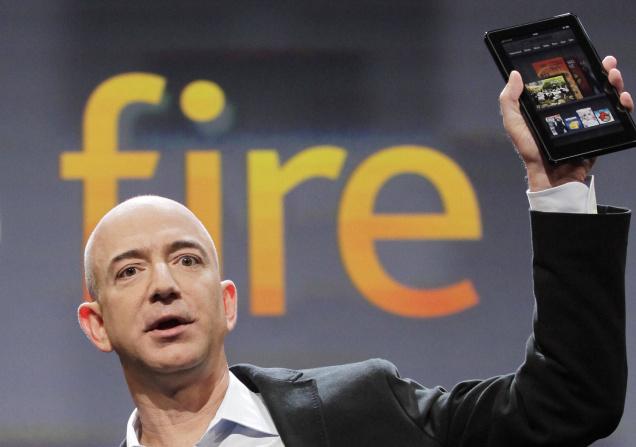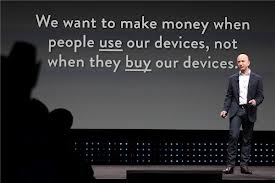The written word as a tool combined with images and then later printed in books and magazines changed the way we think and gave common people access to information. This was the beginning of publishing and mass media, the world of free and paid information was born. We are all better off today and the 3R’s are the basics anyone needs to succeed in this competitive age of information.
Access to information started with the printing press and Bibles! Previously they were not available and used to be chained down in the church so people couldn’t take them home. Sounds strange, but it made sense because they were hard to get, hand scribed and expensive. So supply and demand problems made Bibles not available or affordable to the common folk. Can you imagine first finding and then paying someone to write out a personal copy of the Bible for you today? It would take forever and cost an ungodly sum for sure!
The power of today’s media influences through print or electronic forms should never be under-estimated!
Today ‘the media’ is becoming ever more powerful. The static words and images are coming to life on desktops, tablets and mobile phones all over the world. Smart phone penetration in the USA is around 70% and combined with a tablet, it’s the new combination favourite for mobile consumers. Who want to take their media with them. Whether it’s the commute to work or sitting on the beach, access to ‘your media’ and or a ‘cloud’ connection is what everyone wants to have. We all receive media over load in some ways today.
Next, actually now we have multimedia in 3D with immersive technologies (see Oculus Rift Story) that will take us into virtual worlds as well as show us the inside (nano-vision) of our bodies and other assorted items at the atomic level. We will probably learn some things virtually before we learn to apply them in real life. Think about virtual skateboarding and then having a ‘feel for it’ before you roll the real thing.
So does this new technology supersede the book and magazine world? Definitely… it depends on who you ask? Anyone on the older demographic would say books and magazines will never go out of style. Some others on the younger generation would not be touching books unless they went to school and used textbooks instead of electronic learning. Magazines, like books are now digital. There are many publishers that now utilize both print and electronic product channels to reach their readers, this seems to be a good strategy.
It will be hard to judge the future but at the same time there are not as many bookstores anymore and small used bookstores are disappearing if not totally gone.
Most books are intended to be published only once, although, if they are popular, they can be reprinted. If they are, their content does not usually change appreciably. Books are usually not sold by subscription; that is, unless you belong to a book club, you must buy each book you wish separately Magazines, however, are often sold by subscription, so you get a new issue every week or month, or several times a year. Books, physically, are usually of a higher quality than magazines, since magazines are meant to be disposable.
The content of magazines changes completely with each issue. Also, unlike books magazines contain advertisements, which help pay for their cost. Books are sold in specific categories or genres, depending on whether they are nonfiction or fiction; magazines come in many different categories, including sports, hobbies, politics, science, celebrity news, and e-gaming. The goal of magazines is to entertain and/or inform, whereas books are often expressions of creativity and artistic skill.
In the online, ebook / reader world Amazon has played a major role in getting customers on their Digital Readers.
The Amazon Kindle is a series of e-book readers designed and marketed by Amazon.com. Amazon Kindle devices enable users to shop for, download, browse, and read e-books, newspapers, magazines, blogs, and other digital media via wireless networking. The hardware platform, developed by Amazon.com subsidiary Lab126, began as a single device and now comprises a range of devices, including dedicated e-readers with E Ink electronic paper displays, and Android-based tablets with color LCD screens.
Concurrently with the Kindle device, Amazon launched Kindle Direct Publishing, where authors and publishers independently publish their books directly to Kindle and Kindle Apps worldwide. In open beta testing as of late 2007, the platform has been promoted to established authors by an e-mail and by advertisements at Amazon.com. Authors can upload documents in several formats for delivery via Whispernet and charge between $0.99 and $200.00 per download.
In a December 5, 2009 interview with The New York Times, CEO Jeff Bezos revealed that Amazon.com keeps 65% of the revenue from all ebook sales for the Kindle. The remaining 35% is split between the book author and publisher. After numerous commentators observed that Apple’s popular App Store offers 70% of royalties to the publisher, Amazon began a program that offers 70% royalties to Kindle publishers who agree to certain conditions. Some of these conditions, such as the inability to opt out of the lendability feature, have caused some controversy.
Other criticisms involve the business model behind Amazon’s implementation and distribution of e-books. Amazon introduced a software application allowing Kindle books to be read on an iPhone or iPod Touch. Amazon soon followed with an application called “Kindle for PCs” that can be run on a Windows PC. Due to the book publisher’s DRM policies, Amazon claims that there is no right of first sale with e-books. Amazon states they are licensed, not purchased; so unlike paper books, buyers do not actually own their e-books according to Amazon. This has however never been tested in the courts and the outcome of any action by Amazon is by no means certain. The law is in a state of flux in jurisdictions around the world.
Amazon has reported the Kindle version of Fifty Shades of Grey sold more than double that of Amazon’s print sales of the book, and, in June 2012, the Kindle edition became the first to sell more than one million copies!
Nothing like big numbers helps prove the winner of any race. Not that this is a race, the publishing market is very diversified and lots of people want the physical object (book / magazine) in their hands or on the bookshelf or magazine rack. It’s hard to impress any with your magazine collection if it’s all stored in one slim device, you need the stacks in the closet, attic and under the bed to some kind of filing system that offers the visible validation needed to impress family, friends and the odd stranger you invite to look under your bed!
The download to your device option is even quicker than Amazon’s Free Delivery. It’s hard to beat ‘right now’ delivery at a lower price!
Long live books and magazines I say… and don’t get me started on newspapers! I need to go unwrap my fish for dinner tonight.
Joking 🙂



Leave a Reply